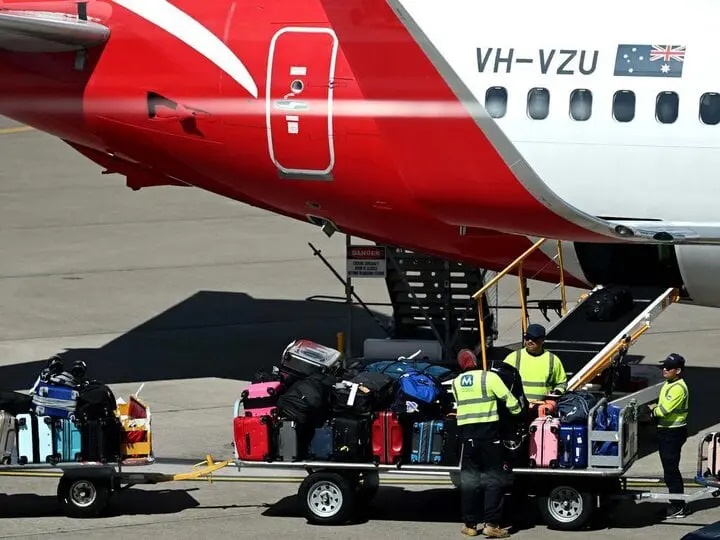Suitcase damaged from being thrown hard, dropped, crushed by other luggage, or may be due to issues with machinery, conveyor belts, airport staff, or other factors.
Damaged checked luggage can cause significant inconvenience to passengers, making travel and business trips become miserable.
Which suitcases are prone to damage when checked in by plane?
The heavier the suitcase, the more likely it is to be damaged when checked in, that’s the revelation of an employee working in the luggage handling department on The Sun website.

Which suitcases are prone to damage when checked in by plane? The answer is heavy suitcases. (Photo: Herald Sun)
This employee states that passengers should understand the fatigue and discomfort of the baggage handlers when in a short time, they have to handle over 200 suitcases, each weighing about 25kg, into the aircraft’s compartment.
The process of loading and unloading luggage for both the outbound and inbound flights takes no more than half an hour. Sometimes, due to exhaustion and lack of time, baggage handlers will throw the suitcases instead of gently placing them. To minimize the risk of damage, baggage handlers advise that if you carry heavy items, you should buy a quality and durable suitcase.
Suitcases with hard and flat surfaces will be less susceptible to damage. Look for suitcases with riveted handles and protective details around the wheels.
“We always prefer suitcases with four wheels underneath because we don’t have to throw them when loading and unloading, just pull them down to the aircraft compartment, and the suitcase as well as the contents inside will be less likely to be damaged,” said a baggage handler to The Sun.
How to choose a suitcase for air travel as checked baggage
Checked baggage includes large items, goods, bulky items… Suitcases used for checked baggage when traveling by plane need to be carefully selected to meet the airline’s standards while reducing the risk of damage.
The most common size for suitcases in air travel is 119x119x81cm, equivalent to a standard checked luggage weight of no more than 32kg/item. To pack checked luggage, you can look for suitable suitcase sizes such as:
– Size 24 suitcase (Size M): 60x40x25cm
– Size 28 suitcase (Size L): 76x48x32cm.
In terms of material, for checked luggage, it is advisable to choose plastic suitcases instead of fabric suitcases. PC and PP plastics used to make suitcases are hard, impact-resistant, and have enough elasticity to not easily crack when dropped or squeezed during transit.
In addition, plastic suitcases are often designed with eye-catching and more colorful designs than fabric suitcases, making it easier for you to track and identify your luggage on the conveyor belt.
According to VTC News

































